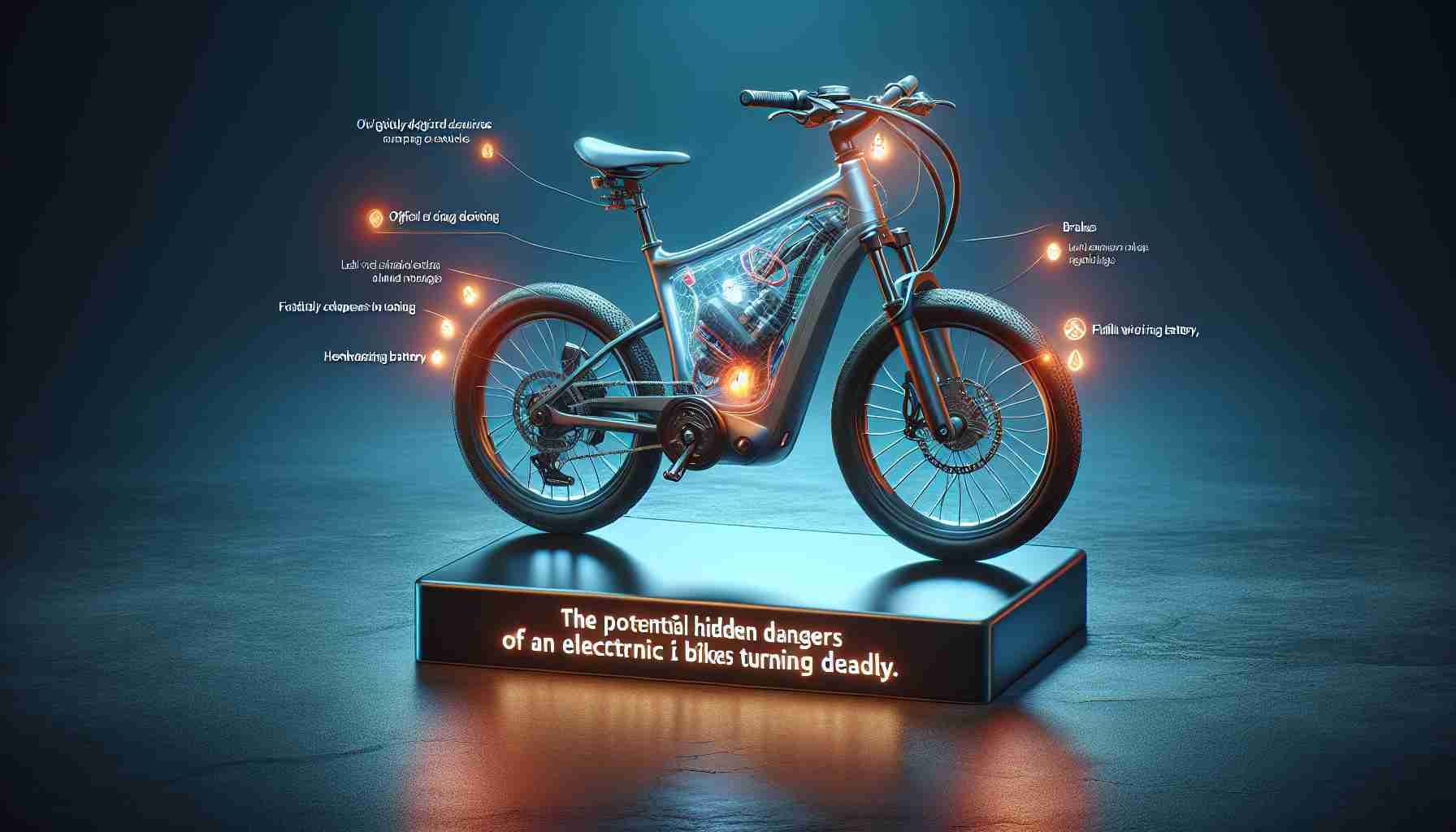Amidst the surge in electric bike popularity, the story of Eric, a man in his sixties, underscores the lurking dangers some riders might overlook. During an August outing along the scenic Canal du Midi, Eric experienced a catastrophic life-altering event when his electric bike fell into the water, causing the battery to explode moments later.
Eric’s harrowing ordeal began when a leisurely bike ride turned into a nightmare. After his electric bike toppled into the canal, Eric retrieved it, patiently waiting for the battery to dry before placing it in his backpack. At that moment, the battery detonated with immense force, leaving Eric with severe second and third-degree burns. He endured an induced coma for eight days, followed by an arduous three-month rehabilitation, and continues to battle his injuries today.
Lithium-ion batteries, the power source behind many e-bikes, can be treacherous, particularly when exposed to water. Yet, users like Eric often lack critical guidance on handling such dangerous situations. Eric’s lawyer, Maître Charlotte Bottai, contends that better information could prevent similar tragedies, pointing to insufficient warnings in user manuals about the batteries’ explosive potential when wet.
Manufacturers and vendors face growing scrutiny as incidents involving bike batteries rise, with Eric’s case highlighting the systemic gaps in consumer information and safety regulations. His struggle for compensation reflects a broader legal struggle for victim recognition and change.
Eric’s plight serves as a sobering reminder of the pressing need for improved safety standards and awareness. It prompts a crucial question: Are electric bike users adequately equipped to handle the potential hazards of their eco-friendly rides? As the electric bike market booms, ensuring user safety must become a top priority.
Is the Electric Bike Revolution Igniting More Than Just Interest?
As electric bikes (e-bikes) continue to gain traction globally, a hidden peril with their lithium-ion batteries is surfacing, prompting safety concerns and sparking debates over regulatory inadequacies. Eric’s unfortunate experience serves as a stark reminder of this silent threat. However, the implications of this issue extend far beyond isolated incidents and are reshaping perspectives in unexpected ways.
The Untold Side of E-Bike Evolution: Environmental and Safety Paradox
While e-bikes are praised for their environmental benefits, reducing reliance on fossil fuels and minimizing carbon footprints, the risks associated with their batteries reveal a paradox that cannot be overlooked. Lithium-ion batteries, the heart of e-bikes, come with significant safety and environmental concerns. These batteries can release toxic fumes upon explosion, posing health risks to individuals and environmental hazards.
Recent studies have shown that the improper disposal of e-bike batteries can lead to soil and water contamination. Countries must confront this dual-edge eco-friendly technology, balancing the promotion of green alternatives with stringent safety and disposal regulations.
Impact on Communities and Urban Planning
The rising popularity of e-bikes is not just reshaping personal transportation; it’s influencing urban planning and public safety measures. Cities now face the challenge of adapting infrastructure to support the e-biking trend safely. This includes not only developing dedicated bike lanes but also establishing guidelines for the storage and charging of e-bikes in residential buildings to prevent battery-related accidents.
Some urban areas have begun implementing centralized e-bike charging stations that follow strict safety protocols, minimizing potential risks. These stations serve as both community hubs and educational platforms, informing users about safe e-bike practices.
Are Regulations Keeping Pace with Innovations?
While the e-bike industry thrives on innovation, regulations often lag. There’s a growing call for manufacturers to adopt more rigorous safety standards and provide transparent usage guidelines, especially concerning battery handling. Consumer advocacy groups are pushing for mandatory safety demonstrations at the point of sale and clearer instructional materials, which could prevent situations like Eric’s.
Meanwhile, the regulatory framework remains inconsistent across borders. For example, while the European Union has stringent regulations on e-bike production, enforcement varies significantly by country. This disparity often leaves consumers unprotected and uninformed.
What Should Potential E-Bike Buyers Consider?
Potential e-bike buyers should be vigilant about several factors:
1. Research Battery Safety: Look for e-bikes that offer advanced battery protection technology.
2. Manufacturer Reputation: Choose brands known for transparency and robust customer support.
3. Training and Education: Participate in safety workshops or sessions offered by local cycling groups or retailers.
In conclusion, while e-bikes offer an exciting alternative to traditional transportation, awareness and preparedness are crucial in preventing potential hazards. As we navigate this new era of electric mobility, both consumers and manufacturers play vital roles in ensuring its safe and sustainable integration into everyday life.
Consumer Product Safety Commission
BBC
The Guardian







